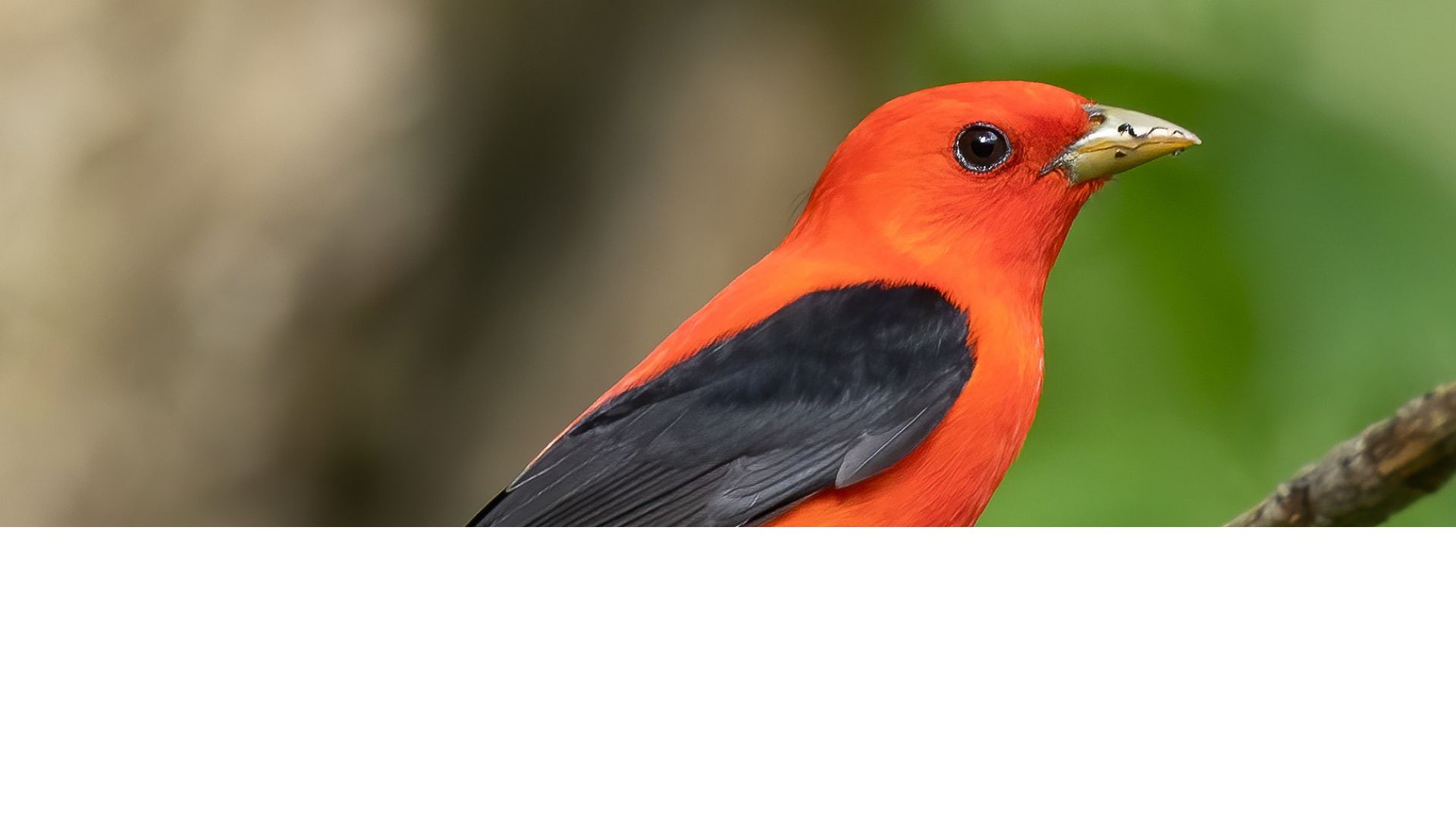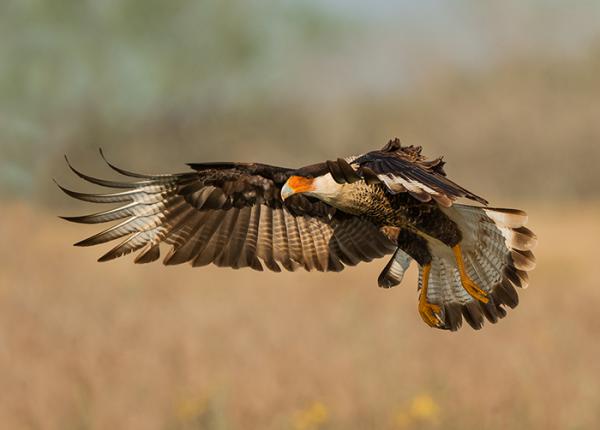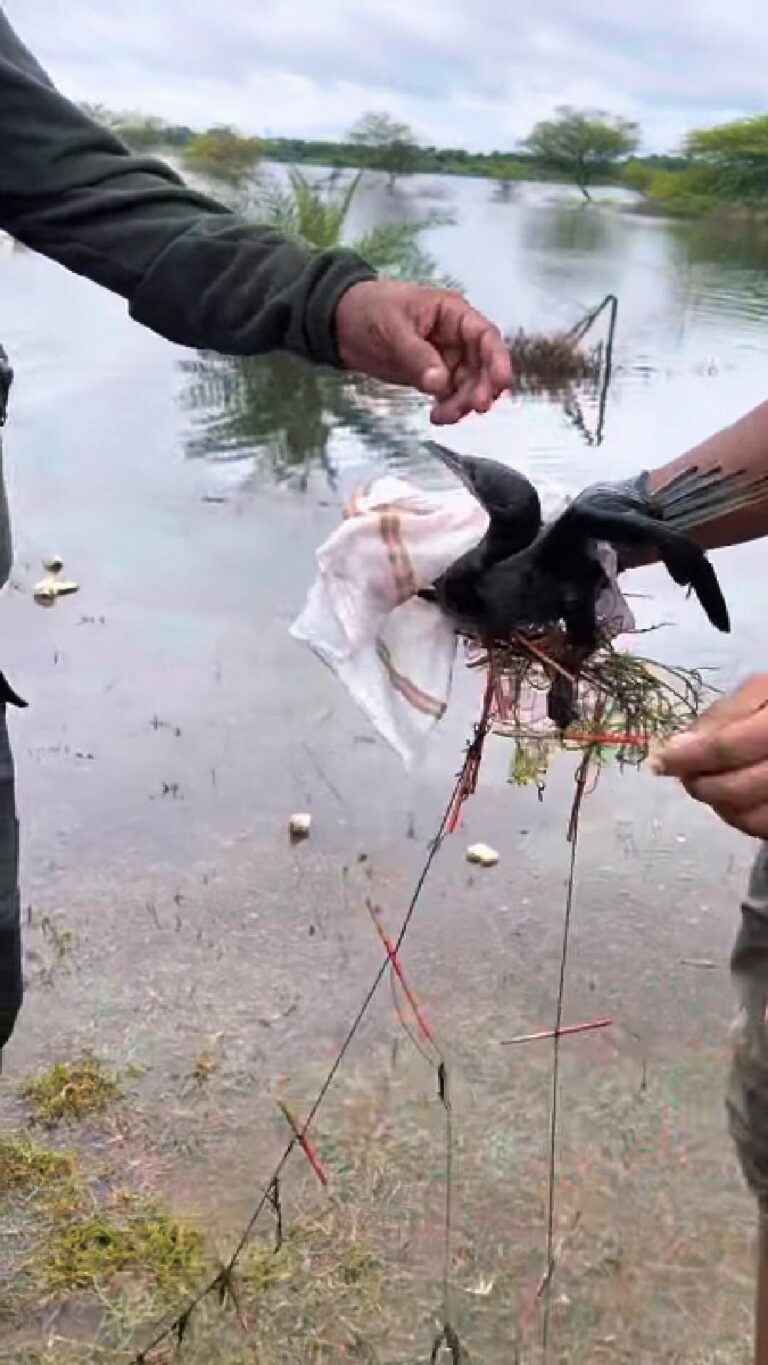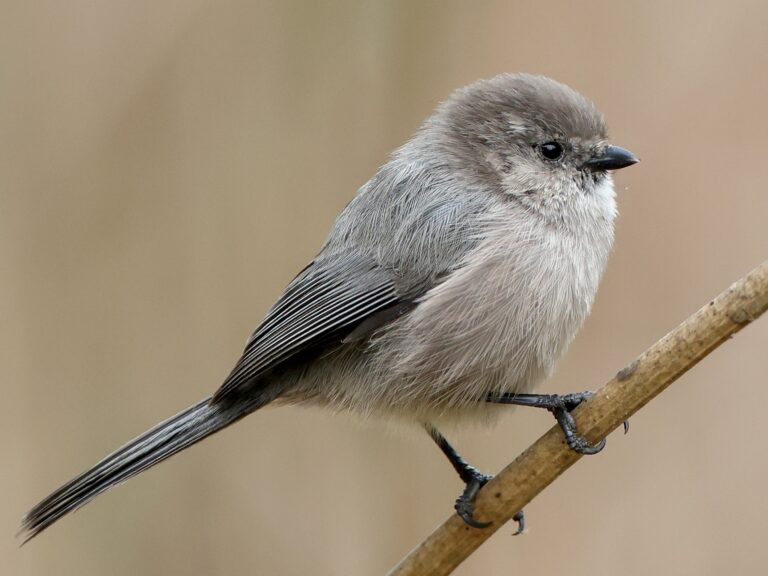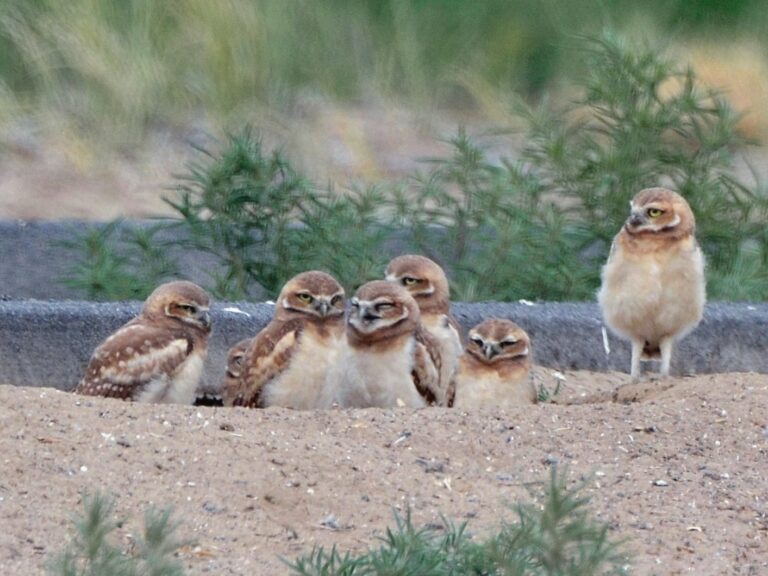Scarlet Tanager: Spring Migration Patterns in Eastern Woodlands
Have you ever spotted a flash of crimson red among the green leaves of a forest? That brilliant streak might be a Scarlet Tanager, one of North America’s most stunning songbirds.
Male Scarlet Tanagers are unmistakable with their bright red bodies contrasting sharply against jet-black wings and tail, making them one of the most visually striking birds in eastern forests during summer months.
These medium-sized songbirds might catch your eye with their vibrant coloring, but they can be surprisingly difficult to spot as they often stay high in the forest canopy.
Female Scarlet Tanagers are much less showy with their yellowish-olive coloration, helping them remain camouflaged while nesting.
Despite their brightness, many bird watchers consider seeing a Scarlet Tanager a special treat because of their tendency to stay hidden among the leaves of mature deciduous forests.
Key Takeaways
- Scarlet Tanagers feature striking red bodies with black wings in males, while females display yellowish-olive plumage for better camouflage.
- These songbirds primarily inhabit mature deciduous forests across eastern North America, typically staying high in the canopy.
- Scarlet Tanagers migrate to northern South America for winter after breeding season, with males molting to a yellowish-green color before their journey.
Identification of the Scarlet Tanager
The Scarlet Tanager is known for its striking appearance that varies by sex and season. Its distinctive colors and markings make it one of the most recognizable birds in eastern forests.
Plumage and Coloration
Adult male Scarlet Tanagers display a stunning transformation throughout the year.
During spring and summer, breeding males showcase brilliant red bodies with jet-black wings and tail, creating a dramatic contrast that makes them unmistakable in the forest canopy.
Nonbreeding males undergo a remarkable change in fall. They molt into a yellowish-green plumage while retaining their black wings. This winter coloration can sometimes cause confusion with other species.
Young males initially resemble females before gradually developing their adult plumage. Their transition often results in a patchy appearance with mixed red and yellow-green feathers.
Distinctive Markings
The solid black wings and tail of the Scarlet Tanager provide the most reliable field mark for identification.
These dark flight feathers contrast sharply with the body color in both breeding and nonbreeding plumages.
Males possess no wing bars or visible patterns on their wings, unlike some similar species. This clean black coloration helps distinguish them from other tanagers.
The boundary between the red body and black wings is crisp and well-defined. This sharp color transition creates what birders often describe as a “dipped in ink” appearance for the wings and tail.
Sexual Dimorphism
Scarlet Tanagers exhibit pronounced sexual dimorphism, making it easy to distinguish males from females.
While males sport their blood-red bodies in breeding season, females maintain a consistent olive-yellow coloration year-round.
Female Scarlet Tanagers are olive-yellow with darker olive wings and tail. Their overall appearance is more subdued than males, helping them remain camouflaged while nesting.
This color difference between sexes can sometimes lead to misidentification of females as different species altogether. However, their size, shape, and habitat preferences match those of the more conspicuous males.
Size and Shape
The Scarlet Tanager has a stocky, robin-like build with proportions that help distinguish it from similar species.
Adults typically measure between 6-7 inches in length with a wingspan of approximately 10-12 inches.
Their body shape features a relatively large head, medium-length tail, and sturdy bill that is slightly curved and conical. This bill shape is specialized for their diet of insects and fruits.
Compared to the similar Summer Tanager, Scarlet Tanagers appear slightly smaller and more compact. Their proportions are balanced, lacking the long tail of some woodland birds or the stockiness of finches.
Habitat and Distribution
Scarlet Tanagers inhabit specific forest environments across eastern North America and follow distinct migration patterns that take them thousands of miles between their breeding and wintering grounds.
Preferred Habitats
Scarlet Tanagers strongly prefer mature deciduous forests, particularly those dominated by oak trees.
These birds thrive in forest interiors with closed canopies and multiple vegetation layers.
They typically avoid forest edges and require relatively large unbroken forest tracts of at least 30 acres.
During breeding season, they select habitats with tall trees, moderate understory, and abundant leaf litter for foraging.
In some regions, Scarlet Tanagers also inhabit mixed deciduous-evergreen forests.
They prefer areas with high canopy cover (often 50-80%) that provides protection from predators and optimal foraging opportunities.
Geographical Range
The breeding range of Scarlet Tanagers spans the eastern United States and extends into southeastern Canada. Their presence is most concentrated in the following regions:
- Northeastern United States
- Appalachian Mountains
- Great Lakes region
- Southern Canada (southern Ontario, Quebec)
During winter months, these birds occupy a completely different geographical area, inhabiting South America – primarily northwestern parts of the continent including Colombia, Ecuador, Peru, and Bolivia.
Their range has remained relatively stable, though forest fragmentation has affected local populations in some areas.
Migration Patterns
Scarlet Tanagers are long-distance migrants that fly across the Gulf of Mexico twice annually. This remarkable journey spans thousands of miles between their breeding and wintering grounds.
Spring migration occurs from late April through May when birds return to North America. Males typically arrive first to establish territories before females arrive.
Fall migration begins in August and continues through October.
During this time, males molt their brilliant scarlet plumage to an olive-green color similar to females.
Migration timing can vary based on weather conditions and food availability. Most Scarlet Tanagers follow similar pathways through Central America rather than taking a direct route over open water.
Diet and Foraging
Scarlet Tanagers are primarily insectivorous birds that supplement their diet with fruits and berries. Their feeding habits vary slightly between breeding and non-breeding seasons, with distinctive foraging techniques used to capture prey.
Typical Diet
Scarlet Tanagers consume a diverse array of insects as their main food source.
They feed heavily on caterpillars, moths, beetles, wasps, bees, and ants. These colorful birds also eat spiders, snails, worms, and millipedes when available.
During the breeding season, they focus almost exclusively on insects. This protein-rich diet helps support the energy demands of reproduction and feeding young.
In late summer and fall, Scarlet Tanagers add fruits to their diet.
They visit many types of berry plants, including blackberries, raspberries, huckleberries, juneberries, serviceberries, mulberries, and strawberries. This dietary shift helps them build fat reserves for migration.
Foraging Behavior
Scarlet Tanagers spend most of their time searching for food in the upper canopy of deciduous forests.
They prefer large forest tracts with big deciduous trees, particularly oaks, where they hunt among the highest branches.
These birds are methodical foragers.
They capture larval and adult insects from leaf, flower, fruit, and bark surfaces through careful inspection.
Their hunting style involves hopping along branches and peering at vegetation to spot camouflaged prey.
During breeding season, individuals forage independently rather than in groups.
They are particularly adept at finding and consuming caterpillars, which form a significant portion of their diet.
Unlike some birds, Scarlet Tanagers rarely feed on the ground. They catch most prey items directly from vegetation while perched or during short hovering flights to snatch insects from leaves.
Reproduction and Lifecycle
The Scarlet Tanager follows a specific reproductive pattern that begins with migration to breeding grounds and culminates with fledglings leaving the nest. These striking birds have evolved nesting behaviors and parenting strategies that help ensure their survival despite numerous challenges.
Breeding Season
Scarlet Tanagers return to their breeding grounds in North America from mid-May to early June.
Males typically arrive first to establish territories, with females following several days to a week later. These vibrant birds prefer large forest tracts with large trees for breeding.
The breeding season is relatively short, lasting through the summer months.
During this time, males undergo a dramatic transformation, displaying their brilliant scarlet plumage with black wings and tail to attract mates. This striking coloration serves as a visual signal of male fitness and territory ownership.
Pair formation happens quickly after females arrive. Males engage in courtship displays, singing from high perches and performing short flight patterns to impress potential mates.
Nesting Habits
After pair bonding, the female takes primary responsibility for nest construction, though males may occasionally assist. Nests are typically built on horizontal branches of deciduous trees, usually far from the trunk and 15-75 feet above the ground.
The cup-shaped nest is meticulously crafted from twigs, grasses, plant fibers, and bark strips. The inner lining often contains finer materials for comfort.
Construction typically takes 3-4 days to complete.
Nesting locations are selected carefully, with preferences for mature forests that provide both cover and food resources. Scarlet Tanagers sometimes become victims of nest parasitism from Brown-headed Cowbirds, particularly in fragmented forest habitats.
Nest placement represents a balance between concealment from predators and accessibility to food sources. The female works diligently to create a secure environment for her future offspring.
Egg Incubation
Once the nest is ready, the female Scarlet Tanager (Piranga olivacea) lays a clutch of typically 3-5 eggs. The eggs have a pale blue-green background with brown speckles and are approximately 0.9 inches long.
The average incubation period lasts about 13 days, with the female providing most of the warming.
During this time, she leaves the nest only briefly to feed, while the male may bring her food and stand guard nearby.
Temperature regulation is crucial during incubation. The female develops a brood patch—an area of bare skin with increased blood vessels—to transfer body heat efficiently to the eggs.
If the first nesting attempt fails due to predation or harsh weather, Scarlet Tanagers may attempt a second clutch, though this becomes less likely as the season progresses.
Raising the Young
When eggs hatch, both parents actively participate in feeding the nestlings. The young birds are altricial—born naked, blind, and completely dependent on parental care.
The parents feed them a diet primarily consisting of insects, which provide the protein needed for rapid growth.
Nestlings develop quickly, growing feathers and increasing in size dramatically during their first days. They typically remain in the nest for 9-11 days before fledging.
Even after leaving the nest, the young birds stay near their parents for several more weeks.
Parents continue to feed fledglings as they develop flight skills and learn to forage.
This extended care period is crucial for survival. Young Scarlet Tanagers gradually develop their juvenile plumage, which differs from adult coloration.
By late summer, the family groups begin to disperse as they prepare for fall migration. The entire breeding cycle, from nest-building to independence, spans approximately 30-40 days.
Behavioral Traits
Scarlet Tanagers exhibit fascinating behaviors that help them thrive in their forest habitats. These distinctive red and black birds display complex social interactions, unique communication patterns, and territorial behaviors that change throughout the seasons.
Social Behavior
Scarlet Tanagers are typically solitary during breeding season, with pairs maintaining distance from other tanagers. Males are particularly territorial during this time, focusing on defending their nesting areas from rivals.
Outside of breeding season, these birds become more social. They often join mixed foraging flocks with other species, which provides safety and improved food-finding efficiency. This social shift happens primarily during migration and winter months.
Foraging behavior is distinctive, with tanagers often seen moving deliberately through the forest canopy.
They carefully search leaves and branches for insects, occasionally performing acrobatic moves to reach prey.
During feeding, they may hover with rapidly beating wings or hawk for flying insects by alternating wing flaps with short glides. This hunting technique helps them catch flying prey in mid-air.
Communication and Vocalization
The Scarlet Tanager’s vocal repertoire is surprisingly complex.
Males produce a song often described as similar to a robin’s but with a hoarse, burry quality that distinguishes it from other songbirds.
Their primary song consists of a series of short, hurried phrases that experts characterize as sounding somewhat like “chip-burr, chip-burr.” This distinctive quality helps birdwatchers identify tanagers even when hidden in dense foliage.
Alarm calls consist of sharp “chip-chick” notes that alert nearby birds to potential dangers. These calls become more frequent when predators approach their nesting areas.
During courtship, males combine vocalizations with visual displays. The male hops on branches below the female with drooped wings and spread tail, showcasing the dramatic contrast between his red body and black wings.
Territoriality and Adaptations
Male Scarlet Tanagers vigorously defend territories ranging from 2-10 acres during breeding season. They establish boundaries through song, physical displays, and occasional direct confrontations with rival males.
Their bright red plumage serves dual purposes: attracting mates and marking territory boundaries. Interestingly, this vibrant coloration exists in balance with their need for camouflage from predators.
Territory selection shows their adaptation to specific habitat needs. Scarlet Tanagers prefer mature deciduous forests with tall trees and open understory, which provides optimal feeding and nesting conditions.
Climate and seasonal changes influence their territorial behavior. As summer ends, their territorial instincts diminish as they prepare for migration. Males also undergo a remarkable transformation, molting their striking breeding plumage for a more subdued yellowish-green winter coloration that resembles females.
Conservation and Threats
The scarlet tanager faces several conservation challenges that impact its population across North America. These striking forest birds are vulnerable to habitat loss, climate change, and nest parasitism, but conservation efforts have helped maintain their populations.
Conservation Status
Scarlet tanagers are currently listed as a species of Least Concern by the International Union for Conservation of Nature. Their population appears stable overall, though local declines have been observed in certain regions.
According to monitoring data, there are approximately 2.6 million breeding scarlet tanagers in North America.
These birds have shown resilience despite some habitat pressures. However, the State of the Birds report from NH Audubon indicates ongoing monitoring is essential as pressures on their forest habitats continue.
Climate change models predict significant range shifts for this species.
In Missouri, with a 3.0°C warming scenario, scarlet tanagers could lose 68% of their range, highlighting the urgency of conservation action.
Common Threats
Habitat loss and forest fragmentation represent the most significant challenges for scarlet tanagers. These birds require large, unbroken forest tracts for successful breeding.
When forests become fragmented, scarlet tanagers face increased pressure from:
- Nest predation near forest edges
- Brown-headed cowbird parasitism
- Reduced breeding success in smaller forest patches
Climate-related threats are also mounting.
Scarlet tanagers face disruptions from spring heat waves, heavy rainfall, and changing fire patterns that can affect their breeding cycle and food availability.
Collision with buildings during migration represents another significant mortality source. As these birds travel between breeding grounds and wintering areas in South America, they encounter numerous human-made hazards.
Protection Efforts
Conservation organizations have implemented several strategies to protect scarlet tanagers. The Cornell Lab of Ornithology and partners track population trends through citizen science initiatives like eBird and breeding bird surveys.
Key protection efforts include:
- Forest preservation: Maintaining large, unfragmented forest blocks
- Habitat management: Creating forest corridors to connect isolated habitats
- Urban planning: Designing bird-friendly buildings to reduce collision mortality
Researchers recommend preserving mature forest habitat across breeding, migration, and wintering ranges. This comprehensive approach addresses the tanager’s full life cycle needs.
Private landowners also play a crucial role by maintaining woodland areas on their properties and implementing bird-friendly management practices. These efforts help provide the forest interior conditions that scarlet tanagers require for nesting.
Interaction with Humans
Scarlet tanagers have limited direct interaction with humans but play important roles in pest control and serve as indicators of forest health. Their striking appearance makes them popular among birdwatchers despite their sometimes elusive nature.
Backyard Birding
Attracting scarlet tanagers to backyard spaces requires specific habitat considerations.
Unlike common feeder birds such as northern cardinals or American robins, tanagers rarely visit traditional bird feeders. They prefer wooded areas with tall trees, making them challenging to spot in suburban settings.
To encourage tanager visits, homeowners should maintain mature trees and native shrubs that produce fruit. According to bird experts at the Cornell Lab of Ornithology, platform feeders with fresh fruit may occasionally attract them during migration.
Tanagers provide natural pest control by consuming insects that damage garden plants. Their diet includes many insects that humans consider pests, creating a mutually beneficial relationship.
Water features in gardens, especially those near woodland edges, can also draw tanagers during hot summer days.
Ecotourism Impacts
The brilliant red plumage of male scarlet tanagers makes them sought-after subjects for wildlife photographers and birdwatchers in parks and forested hills. Popular birding destinations often highlight tanager sightings during spring migration.
Ecotourism centered around bird watching can have mixed effects.
When properly managed, it increases awareness about forest conservation and tanager habitat protection. However, excessive human traffic can disrupt nesting areas.
Tanagers face declining numbers due to forest fragmentation, making responsible ecotourism practices essential. Many parks now maintain designated viewing areas that minimize habitat disturbance.
Guided bird walks in preserves offer opportunities to view tanagers while educating visitors about their ecological importance and the threats they face from habitat loss and climate change.
Frequently Asked Questions
Scarlet Tanagers generate many questions from birdwatchers due to their striking appearance and seasonal behavior patterns. These distinctive birds have specific characteristics that help with identification and understanding their ecological role.
How can you distinguish between a male and female Scarlet Tanager?
Male Scarlet Tanagers display blood-red bodies with jet-black wings and tail, creating a dramatic contrast that makes them instantly recognizable in summer. They average about seven inches in length.
Female Scarlet Tanagers have a completely different appearance. They feature yellowish-green body feathers with darker wings, making them much less conspicuous in the forest canopy.
Interestingly, male Scarlet Tanagers change their appearance in winter, molting to resemble females with their yellowish-green plumage.
What is the typical diet of a Scarlet Tanager?
Scarlet Tanagers primarily feed on insects during the breeding season. They capture caterpillars, beetles, wasps, and other insects from leaves and branches.
In late summer and fall, they supplement their diet with wild fruits and berries. This dietary shift helps them build fat reserves for migration.
Their foraging behavior involves methodically searching through foliage in the forest canopy. This often makes them difficult to spot despite their bright coloration.
In which habitats are Scarlet Tanagers most commonly found?
Scarlet Tanagers prefer mature deciduous forests, particularly those dominated by oak trees. They spend most of their time in the upper canopy of these forests.
They are especially associated with oak forests in summer, where they forage among the leafy upper branches. This canopy-dwelling behavior contributes to their elusive nature.
Large unbroken tracts of forest provide optimal habitat for these birds, as they tend to avoid forest edges and fragmented woodlands.
What is the geographic range of the Scarlet Tanager?
Scarlet Tanagers breed across the eastern United States and southeastern Canada. Their breeding range extends from southern Canada south to northern Georgia and from the Great Plains eastward.
During winter, they migrate to northwestern South America, particularly to countries like Colombia, Ecuador, and Peru. This long-distance migration typically occurs in late September through October.
They return to their North American breeding grounds in late April and May, with males usually arriving slightly before females.
Can you expect Scarlet Tanagers to visit backyard bird feeders?
Scarlet Tanagers rarely visit bird feeders. Their natural diet consists primarily of insects and wild fruits found in their forest habitats.
Occasionally, they might visit yards adjacent to forested areas, especially if fruit-bearing native trees or shrubs are present. Even then, these visits tend to be brief and unpredictable.
These birds are rarely seen unless you know where to look, making a sighting at a feeder an uncommon but exciting event for birdwatchers.
What are the identifying characteristics of a Scarlet Tanager’s song?
The Scarlet Tanager’s song consists of a series of burry, robin-like phrases. It has been described as sounding like a robin with a sore throat.
Their call is a distinctive “chip-burr” or “chip-churr” sound that can help identify them even when hidden in dense foliage.
Males sing most frequently during the breeding season. They often sing from exposed perches in the mid to upper canopy of trees.
